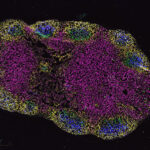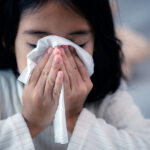COVID-19 and children: Understanding the science

As information on COVID-19 pours in from all kinds of sources, not all of them reliable, we wanted to bring you the facts about how children and teens appear to be responding to the infection.
In recent weeks, several highly respected medical journals have published studies and commentaries based on observations in children and teens in China with COVID-19. These reports have been peer-reviewed, meaning they were carefully vetted by other experts in the field. While these observations may not reflect how children are responding elsewhere, they provide an early look.
- The largest study so far, published in Pediatrics, included analysis of 2,143 children with COVID-19 documented from January 16 to February 8 in China. It found that symptoms of the disease were generally less severe in children/teens compared with adults. Specifically, 4.4 percent had no symptoms, 50.9 percent had mild disease, and 38.8 percent had moderate symptoms.
- Of the children with symptoms, only 0.6 percent developed acute respiratory distress syndrome or multiple organ dysfunction. Of note, however, young children — particularly infants under one year of age — had a higher risk for significant illness. Ten percent of infants had severe disease compared with three percent of teens over age 15.
- A study published March 18 in the New England Journal of Medicine reported from the major medical center treating children in Wuhan, China, the original epicenter of the COVID-19 outbreak. Of 171 children and teens, about 16 percent had no symptoms. The most common symptoms were cough, sore throat, and fever.
- Two studies suggest that the SARS-CoV-2 virus, which causes COVID-19, does not pass from an infected woman to her baby. A small study in The Lancet, involving nine pregnant women who had COVID-19 pneumonia, found that none of their newborns showed signs of the infection. Nor was the virus detected in the mothers’ milk or in the fluid surrounding the baby before birth. Another study, in Frontiers in Pediatrics, followed four different COVID-19-infected pregnant women in Wuhan, China. There was no proven vertical transmission (transmission from mother to baby during pregnancy).
- A study from China published in Gastroenterology revealed that the virus has been found to be present in feces for several weeks after diagnoses. However, it is not known whether the disease is transmitted by contact with fecal material.
“What seems to be consistent so far, in multiple settings in multiple countries, including the U.S., is that the majority of COVID-19 infections in individuals under the age of 19 tend to be mild. ” Kristin Moffitt, MD
Infections in children are mild; most children haven’t met criteria for testing

For clarity on what these findings might mean for kids and their parents, we turned to Kristin Moffitt, MD, of the Division of Infectious Diseases at Boston Children’s Hospital. “What seems to be consistent so far, in multiple settings in multiple countries, including the U.S., is that the majority of COVID-19 infections in individuals under the age of 19 tend to be mild,” she explains. “Infection in pediatric patients of all ages tends to be associated with significantly lower rates of hospitalization and significantly lower rates of critical and severe illness.”
Since testing for the virus has been limited to this point, Moffitt believes that a majority of infections in children and teens are going undiagnosed. “Right now, testing is being prioritized for patients who meet criteria for high risk of more severe infection,” she says. “Since the large majority of pediatric patients have relatively mild infection and symptoms, most of them will not meet criteria for testing.”
Severe symptoms linked to immature immune systems
In the large Pediatrics study, the highest rate of moderate to severe illness was seen in infants.
“That probably has something to do with variations in the immune system,” says Moffitt. “It is not unusual for children under 1 year to need some sort of hospital-level intervention with any respiratory viral illness. It is related to their relatively immature immune systems.”
No documented cases of infection during pregnancy
In the handful of cases where women with confirmed COVID-19 infection gave birth, there is no evidence that the infant was infected before or during delivery. As reported in The Lancet, the youngest documented case was in a newborn at 36 hours of life in China.
“The presumption still is that these newborns are in close contact with infected caregivers and mothers and that contact with these caregivers is the mode of transmission as opposed to vertical transmission,” says Moffitt. But she notes that the number of cases in pregnant women and newborns is small, and more data are needed to exclude the possibility of vertical transmission.
Uncertain role of transmission in feces
Nearly all samples used for virus testing have been nasal or throat swabs. But genetic material from the virus has also been detectable in the stool of patients with confirmed infection, even as far out as several weeks after diagnosis. Could contact with that stool pose a risk of infection?
“Whether or not that is a source of transmissible virus is still not clear,” adds Moffitt. “For that reason, we strongly recommend very careful hand hygiene and decontamination of surfaces where toileting or diaper changes take place.”
Learn more about COVID-19 from Boston Children’s.
Related Posts :
-

Creating the next generation of mRNA vaccines
During the COVID-19 pandemic, mRNA vaccines came to the rescue, developed in record time and saving lives worldwide. Researchers in ...
-

Tracking influenza in its first battleground: The nose
The answer to curbing influenza could be right under our noses — or, more accurately, inside them. New research maps happenings ...
-

Reversing the trend: Easing the mental health boarding crisis in emergency rooms
Anxiety, depression, and suicide attempts have been rising over the past decade, especially among teens, often landing them in emergency ...
-

Brain wiring predicted adolescents’ emotional health during COVID
The COVID-19 pandemic was emotionally devastating for many adolescents, disrupting their schooling and social/emotional development. Drawing on national data, ...





